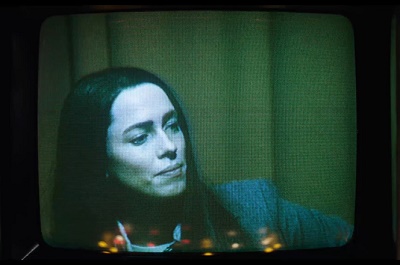
The nypost takes a look at the touching story of a virgin newscaster who shot herself during a live broadcast.
On July 15, 1974, a TV newscaster in Sarasota, Fla., looked into the camera and read the following words from a script she’d prepared: “In keeping with Channel 40’s policy of bringing you the latest in ‘blood and guts,’ and in living color, you are going to see another first — attempted suicide.” She then drew a .38 revolver from under the desk and shot herself in the head.
The newscaster, a 29-year-old virgin named Christine Chubbuck, is the subject of not one but two films at this year’s Sundance Film Festival. In the narrative film “Christine,” British actress Rebecca Hall plays the journalist with a serrated edge of frustration and bitterness.
In the more unconventional “Kate Plays Christine,” which merges documentary with re-created episodes from Chubbuck’s life, actress Kate Lyn Sheil is filmed both researching the part in Sarasota and playing Christine as a lost soul wandering in a cloud of depression.
Not surprisingly, Chubbuck’s story is often linked to Paddy Chayefsky’s 1976 film “Network.” But as Dave Itzkoff, who wrote “Mad as Hell: The Making of ‘Network’ and the Fateful Vision of the Angriest Man in Movies,” pointed out on Twitter this week, the scene in which Chayefsky’s Howard Beale is murdered on live TV was planned before the real newscaster’s suicide.
Both Chubbuck movies, which were still seeking a distribution deal as the festival neared its end, look for answers as to why the newscaster shot herself on the air (she died the following day at a nearby hospital).
Both note that Chubbuck was lonely, and that she sought romance with a handsome anchor named George (played, in “Christine,” by “Dexter” star Michael C. Hall), who was dating a colleague. She’d also lost an ovary to a cyst, reducing her chances of pregnancy.
“Christine” is much more focused on the workplace pressures facing Chubbuck, whose station manager (Tracy Letts) is seen telling his reporters that the hot new trend in TV news is to ditch the reasoned analysis in favor of shocking footage of fires and mayhem. He’s even come up with what he decides is a brilliant new motto for TV news: “If it bleeds, it leads,” he tells his crew. Chubbuck wants to do lengthy reported pieces on zoning issues, a quirk played for laughs by director Antonio Campos.
“Kate Plays Christine” — a much artier film in which the feminist lead actress is seen repeatedly refusing to re-enact the suicide scene because she thinks it’s too exploitative — frames the story as one of deep depression and arrested development: Chubbuck, we learn in that film, slept in a bedroom decorated like a 9-year-old’s, complete with little-girl curtains around her bed. A scene set in the same gun shop where Christine bought her revolver suggests that the easy availability of firearms was a factor in her death.
“Christine,” on the other hand, is much less kinder to its lead character, who comes across not as depressed but as antisocial — awkward, prickly and cold. It also at times strikes a satiric tone and ends with Christine’s friend obliviously watching “The Mary Tyler Moore Show.”
Before Chubbuck shot herself, she’d asked her co-workers to videotape her newscast. So where is it? In “Kate Plays Christine,” surviving staff members say only one copy of the tape was made, that the station owner kept it, his widow now has it and that it may be so degraded by now as to be unwatchable. But the movie ends without pursuing these leads, so it’s unclear whether any images of Chubbuck’s shocking end exist.
No comments:
Post a Comment